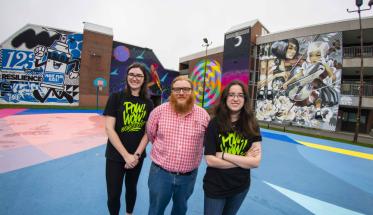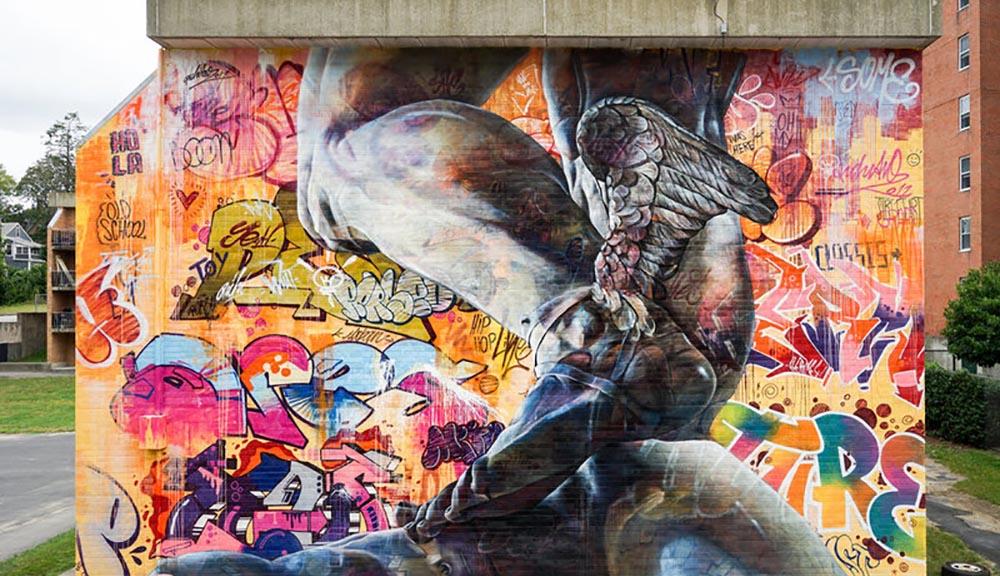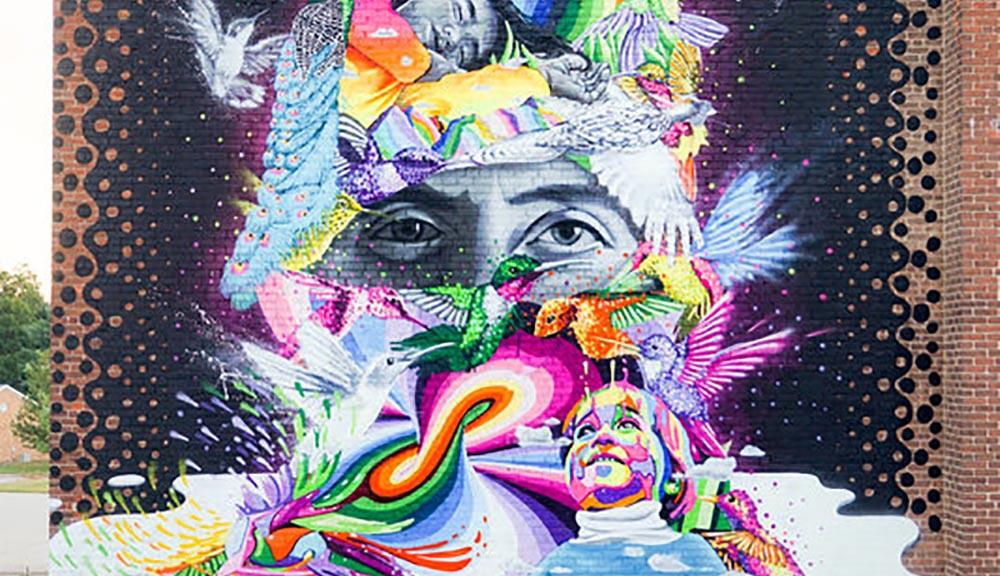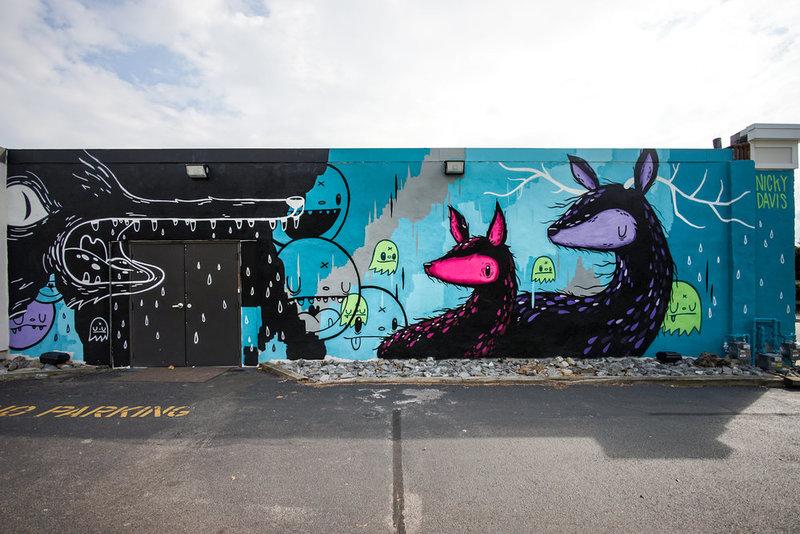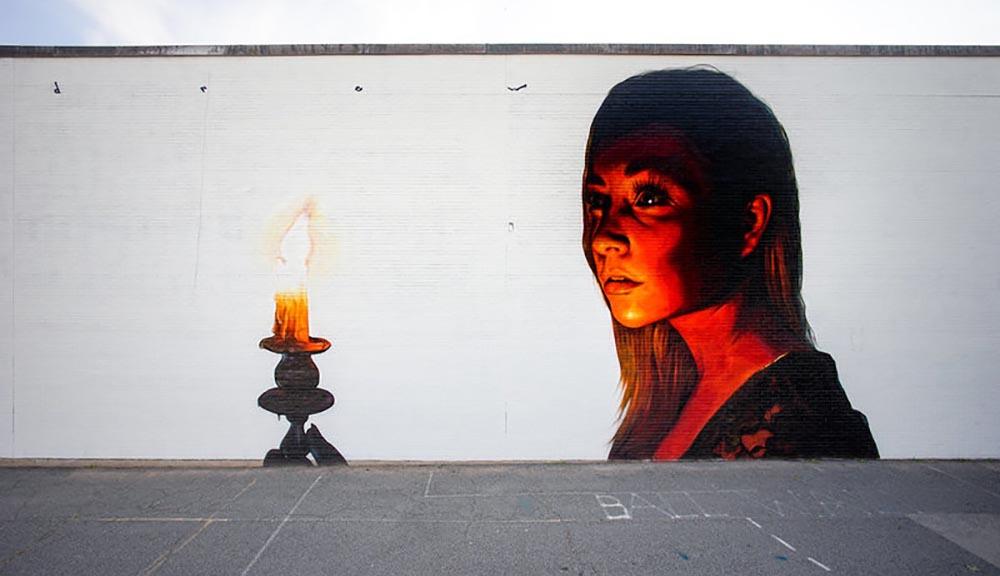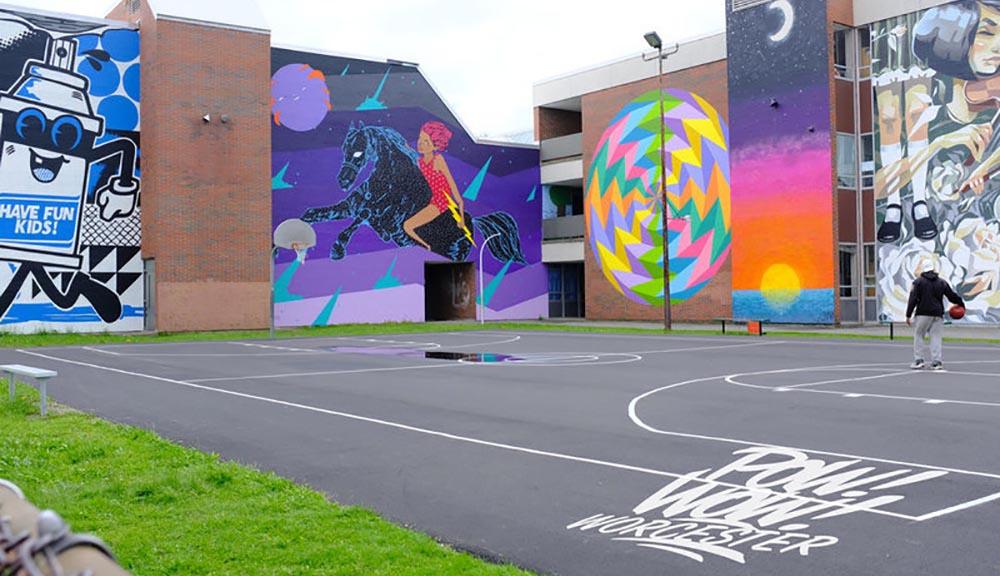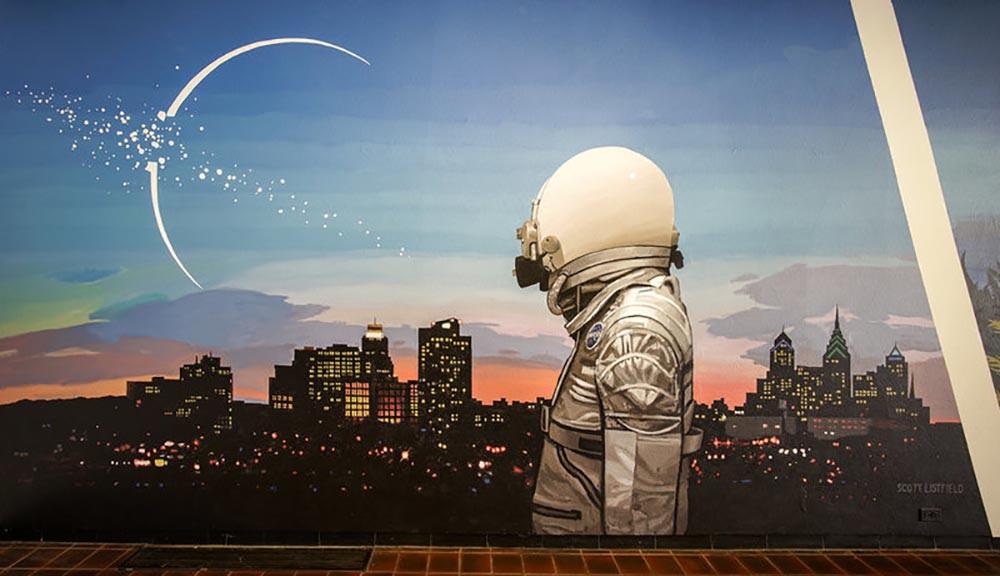The recent explosion of vibrant street art and murals throughout Worcester had associate teaching professor Joseph Cullon and a team of students wondering how to connect this celebration of public art with the city’s historical and cultural growth.
The answer: an interactive mural tour for POW! WOW! Worcester––a city-wide effort to bring in more cultural enrichment and artistic vitality by recruiting local, national, and international artists to paint murals on walls through the city.
The website created by Cullon, Sarah Kwatinetz ‘21, and Brittany Goldstein ’21 over the summer is an extensive, heavily researched catalog of the POW! WOW! murals painted at 22 locations in 2016 and 2017. It employs brilliant photos, archival images of the buildings on which the artwork is painted, text describing the historical and cultural significance of mural locations, links to artists’ web pages, and interactive digital maps that locate and provide directions to the sites.
They are now in the process of finalizing information about the most recent murals, created between August 31 and September 9 by 32 artists on 27 outdoor surfaces at 17 sites.
“The reason we undertook this is we often think of things in separate boxes,” says Cullon. “History is often narrated separately from current cultural events. We’re trying to create a system that brings together the conversation and extends it so it’s not just about the moment of the present but it also connects to the city’s past.”
Bringing in Cultural Enrichment
The introduction of historical and cultural elements on the website makes the presentation of the murals more than just a list; Cullon sees the site as a way of not only putting the murals in some kind of historical perspective, but also preserving information about the creation of the artwork as a part of Worcester’s story.
“The city is a historical document itself, and it’s constantly being edited and changed,” says Cullon. “And I think when you look at the collective work of the [mural] sites, which is only made possible when you’re stepping back, you can see the way in which in particular moments the city has been reinvented. For example, many of the buildings with murals went up as part of urban renewal in the second half of the 20th century. This is no accident and it comes that POW! WOW! is just another moment when we’re reinventing the city and what it means.”
“We often think of things in separate boxes. History is often narrated separately from current cultural events. We’re trying to create a system that brings together the conversation and extends it so it’s not just about the moment of the present but it also connects to the city’s past.” -Joseph Cullon
He notes that some of the murals painted in 2016—including the Palladium, the Hanover Theatre, and the YWCA—have been painted over. “I’m concerned about what happens to the murals after they’re painted and the way we think about them as one piece of a longer story of the city,” he says. “So the website also becomes a way to preserve the history of the moment that created those murals and the way in which those murals existed in the city for two years.”
